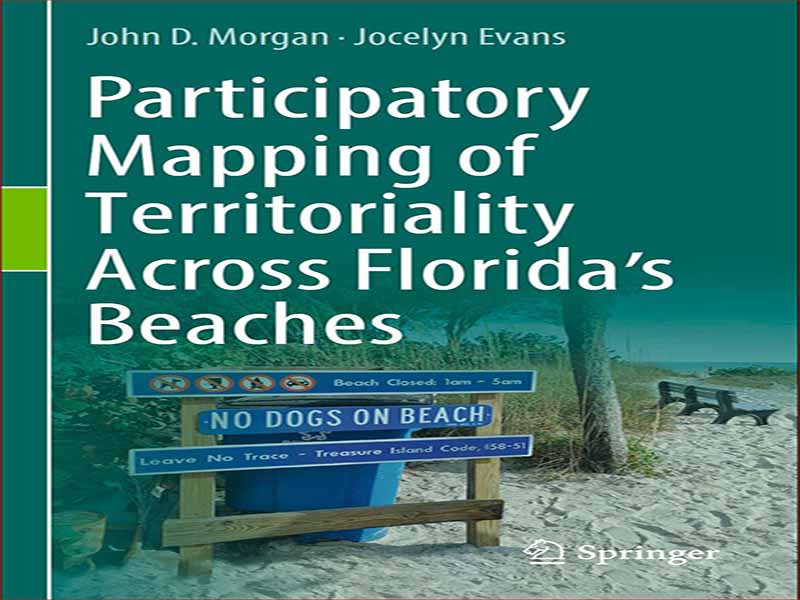- عنوان کتاب: Participatory Mapping of Territoriality Across Florida’s Beaches
- نویسنده: John D. Morgan, Jocelyn Evans
- حوزه: نقشه برداری
- سال انتشار: 2022
- تعداد صفحه: 111
- زبان اصلی: انگلیسی
- نوع فایل: pdf
- حجم فایل: 5.24 مگابایت
سواحل فلوریدا در اواسط دهه 1700 بسیار زیستگاه جمعیت بومی بود. این تأثیر اولیه هنوز در نامهای مکان در امتداد ساحل، مانند Okeechobee، Pahokee، و Loxahatchee آشکار میشود (Kleinberg 2021). ساحل به عنوان یک مکان تفریحی و رفاهی یک پدیده نسبتاً جدید در تاریخ است. مورخ فرانسوی آلن کوربین (1994) دیدگاه اولیه اروپا از ساحل را به عنوان مکانی ناشناخته و مورد ترس اکثر مردم توصیف می کند. تقریباً در اواسط قرن هجدهم بود که نخبگان اروپایی به ساحل به عنوان مکانی برای اوقات فراغت، تفریح و حتی حفظ سلامتی (مثلاً هوای تازه و حمام کردن در دریا) نگاه کردند. این فصل خوانندگان را از طریق ساحل به عنوان مکانی برای اوقات فراغت و سکونت که در شکل و عملکرد اجتماعی رشد کرده است، خواهد برد. کسانی که در منطقه ساحلی زندگی می کنند از امکانات خاص جغرافیایی مانند مناظر زیبایی شناختی، آب و هوای معتدل (مانند نسیم معتدل دما)، و افزایش دسترسی به فرصت های تفریحی بهره مند می شوند. این مزایا به عنوان خدمات اکوسیستم تعریف شده توسط ارزیابی اکوسیستم هزاره (2005) نامیده می شود و شامل امکانات ملموس و ناملموس می شود. خواه از نظر زیبایی شناختی، الگوهای آب و هوای معتدل یا سایر امکانات رفاهی، کسانی که می توانند هزینه زندگی در ساحل یا نزدیکی آن را داشته باشند، به طور فزاینده ای این کار را انتخاب می کنند. با کمتر از 25 درصد مساحت، جوامع ساحلی بیش از 52 درصد از جمعیت ایالات متحده را در خود جای داده اند (کمیسیون ایالات متحده در مورد سیاست اقیانوسی 2004)، و این تعداد در حال افزایش است. افزایش رقابت برای املاک و مستغلات در کنار اقیانوس منجر به تنش های ارضی شده و منجر به دعوای حقوقی با دلار بالا شده است. این موارد، که در سراسر خصوصی در خصوصی، عمومی در خصوصی، و خصوصی در عمومی را شامل می شود، منعکس کننده تنش اساسی در خط ساحلی برای دسترسی و نزدیکی به امکانات ساحلی است.
The Florida beaches of the mid-1700s were very much the habitat of native populations. This early influence is still revealed in the place’s names along the coast, such as Okeechobee, Pahokee, and Loxahatchee (Kleinberg 2021). The beach as a place of recreation and amenity is a reasonably recent phenomenon in history. French historian Alain Corbin (1994) describes the early European view of the beach as an unknowable place and feared by most. It wasn’t until approximately the mid-eighteenth century that European elites began to see the beach as a place of leisure, recreation, and even health maintenance (e.g., fresh air and sea bathing). This chapter will take readers through the beach as a place of leisure and residence as it grew in societal form and function. Those who reside within the coastal zone benefit from geographically specific amenities such as aesthetic views, moderated weather (e.g., temperature-moderating breezes), and increased access to recreational opportunities. These benefits are referred to as ecosystem services defined by the Millennium Ecosystem Assessment (2005) and include tangible and intangible amenities. Whether for the aesthetic view, the moderated weather patterns, or other amenities, those who can afford to live on or near the coast increasingly choose to do so. With less than 25% of the land area, coastal communities are home to more than 52% of the US population (US Commission on Ocean Policy 2004), and these numbers are increasing. Increased competition for oceanfront real estate has led to territorial tensions and has resulted in high-dollar litigation. These cases, which span across private-on- private, public-on-private, and private-on-public, reflect an underlying tension at the shoreline for access and proximity to coastal amenities.
این کتاب را میتوانید از لینک زیر بصورت رایگان دانلود کنید:
Download: Participatory Mapping of Territoriality Across Florida’s Beaches




































نظرات کاربران